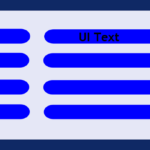At the initial stage of work, it often happens that the customer does not have a clear vision of the future site. There may also be some misunderstandings within the team when each of the participants has his own vision.
And here when you need the site prototype. The prototype is an important conceptual design that precedes the development of the original website design layout. It helps to visualize all the ideas and come to a compromise without the need to redo the results.

But is there always a sense of creating a website prototype? Read on and get all the answers if you need it and if you don’t!
To save time and money, you should start with a website prototype. One of the easiest and quickest ways to create one is to use online tools. Try the simplest and most effective website prototyping tool for absolutely free!
15 reasons to use a prototype
- A prototype is a means of quick coordination. There is no better way to quickly coordinate all the details of a project than to make its visual representation.
- A prototype saves time: changes that take seconds in a prototyping tool can take hours, days, or weeks in Photoshop, on a layout or a ready website.
- If you don’t have a prototype, all pitfalls appear at the production stages or even after the start of the project. It is always better to find the problem in the project at the prototype stage.
- A prototype is not an additional step. If there is no prototype, then all the design work goes to the design stage, slowing the website development process and making it more expensive. You should know that the prototype does not increase the amount of work, but reduces it!
- The prototype simplifies the design phase – when there are schemes for all pages, the composition and arrangement of all elements, drawing layouts is easier and cheaper. This makes the design phase much more predictable.
- The prototype is self-sufficient. This is a finished project with which you can contact any company and continue working on it, if necessary.
- The prototype takes work with content to a completely different level. Each page, even a text one, is created as an interface: information is structured, accents are placed, illustrations and interactive elements are planned.
- If the project starts with a prototype, the customer will be able to see the site and even start testing it at the earliest stages, before expensive production stages begin.
- The prototype helps the customer formulate their requirements – when a project takes shape quickly and clearly right before his eyes, it immediately becomes obvious what adjustments and amendments it requires. The contractor, in turn, willingly makes corrections, because it’s simpler.
- The good prototype shoes how all the links are working demonstrates the work of interactive elements, the functioning of the server part, which means that you can work out all the difficult stages of interaction with the visitor on it.
- A detailed prototype can well be given to focus groups for testing.
- The prototype can and should be used as part of presentations for customers and investors. There is no better way to show what you plan to do than to demonstrate a prototype of the project you are creating.
- If a prototype is used, then the work is divided into two parts: design and implementation. This means that, at first, the customer pays only for the design. So the risks are minimized.
- Keep in mind that many tasks seem simpler before you start working on them. A prototype is a great way to understand in time that a project is too expensive or not feasible.
- The prototype is much more understandable and comprehensively describes the site than a technical project with 80 pages that no one clearly understands and does not want to read.
7 reasons not to create a website prototype
- The prototype still does not replace the technical project – it describes the interfaces of the site. The server side of programming and the database still needs to be described.
- To perceive even a deeply developed prototype, you need to have abstract thinking. Customers, that are «visuals» sometimes do not perceive the prototype and can only work with the design.
- Creating a prototype is not reasonable for simple projects, which consist of one or two templates, for example, the main and content pages, which are filled with the same content.
- Also, you don’t need to make a prototype if you create a project using an existing platform, and if its functions are deliberately limited (for example, a blog engine or stores), because the functionality is already defined.
- The prototype will not help in working on a project that requires a creative visual solution. Complex graphics and ideas are best demonstrated in the form of presentations and sketches, but not prototypes.
- If an online project is being redesigned while keeping functionality the same, it can work as a prototype.
- A detailed prototype of the project, from the first page to the smallest dialog box, can become useless if the project is planned to be carried out according to flexible development methods.
Join 25,000+ smart readers—don’t miss out!





